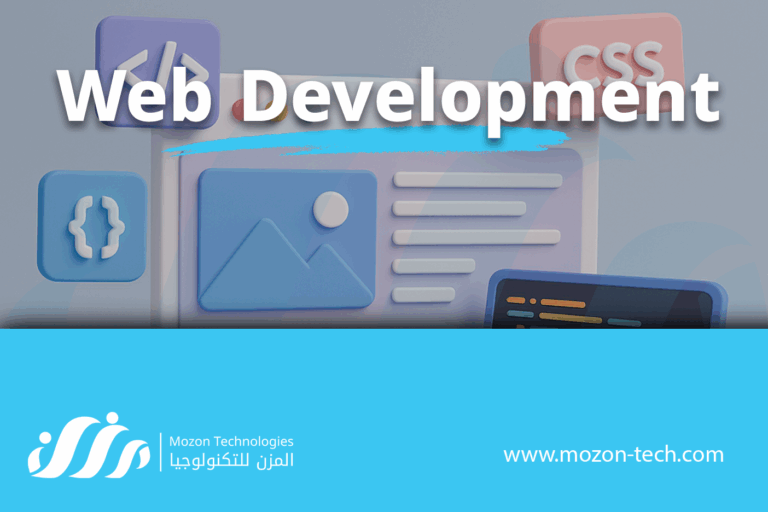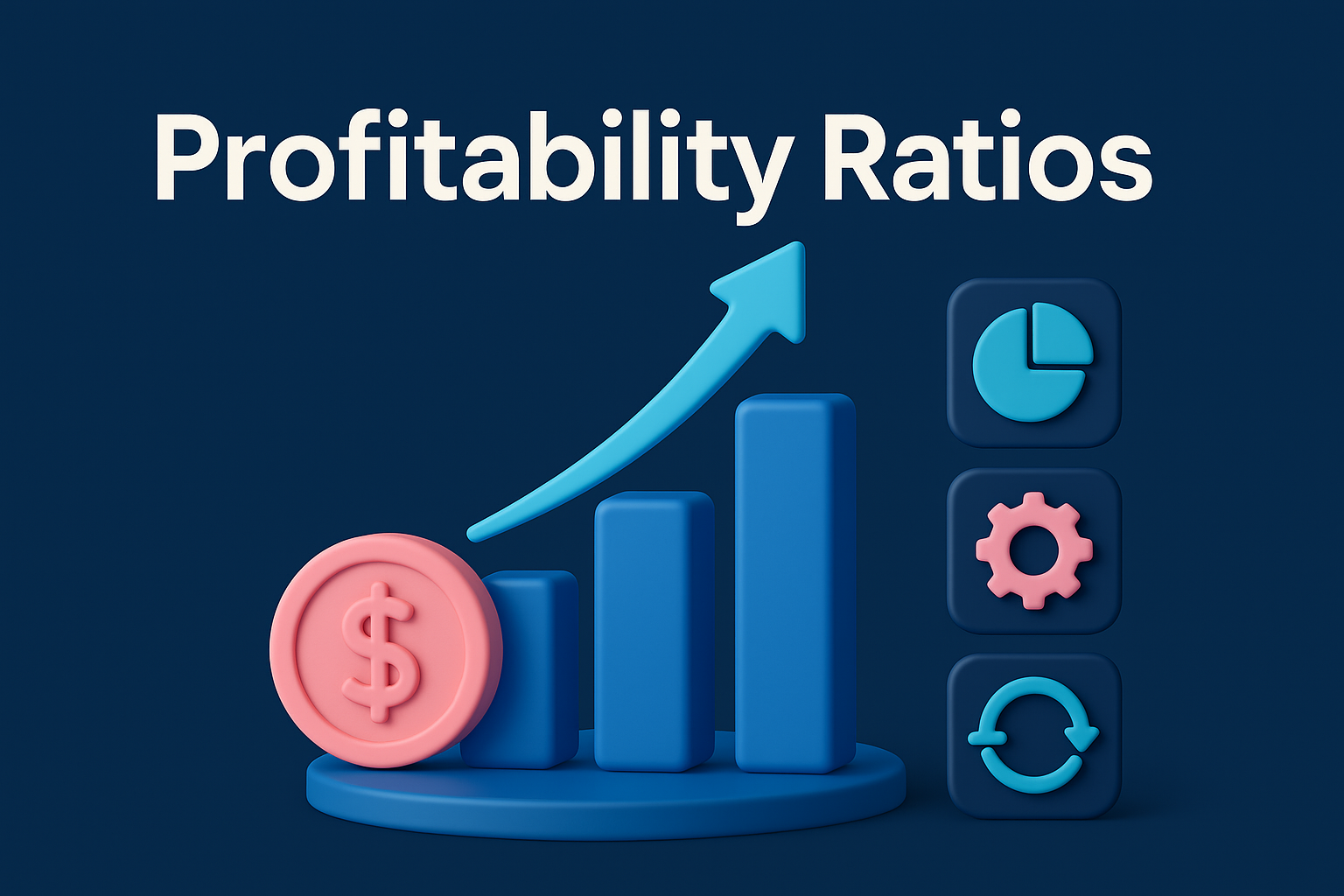Web development stands as one of the most critical technical fields in our current era, experiencing rapid growth and increasing demand in the job market. With the continuous evolution of technology and the growing dependence on the internet, developing websites and web applications has become an essential necessity for businesses and individuals alike.
What is Web Development?
Web development is the process of creating and building internet websites and web applications, ranging from simple design to complex and interactive applications. This field encompasses several technical and creative aspects, from programming and design to database management and performance optimization.
Types of Web Development
Frontend Development
Frontend development focuses on the visible part of the website that users interact with directly. This type includes:
- HTML: HyperText Markup Language that forms the basic structure of web pages
- CSS: Cascading Style Sheets responsible for visual appearance and design
- JavaScript: Programming language that adds interaction and dynamism to pages
Backend Development
This deals with the hidden side of the website, responsible for business logic and data management. It includes:
- Programming Languages: such as Python, PHP, Java, Node.js, and others
- Database Management: MySQL, PostgreSQL, MongoDB
- Web Servers: Apache, Nginx, IIS
Full Stack Development
Combines both frontend and backend development, where developers can work on all aspects of a web application from start to finish.
Essential Technologies and Tools
Popular Frameworks
For Frontend:
- React.js: Powerful JavaScript library for building user interfaces
- Vue.js: Flexible and easy-to-learn framework
- Angular: Comprehensive platform for application development
For Backend:
- Express.js: Fast framework for Node.js
- Django: Integrated Python framework
- Laravel: Elegant and powerful PHP framework
Development Tools
- Text Editors: Visual Studio Code, Sublime Text, Atom
- Version Control Systems: Git, GitHub, GitLab
- Build Tools: Webpack, Vite, Parcel
- Testing Tools: Jest, Cypress, Selenium
Importance of Web Development in the Digital Age
For Companies and Organizations
Web development provides companies with a platform to reach a wider audience and improve customer experience. Modern websites help in:
- Increasing brand awareness
- Improving customer service
- Increasing sales and profits
- Expanding geographical reach
For Developers and Professionals
Web development is considered one of the most in-demand fields in the job market, offering:
- Diverse and increasing job opportunities
- Lucrative salaries and clear career path
- Freelancing possibilities and independence
- Continuous learning and keeping up with technological developments
Modern Trends in Web Development
Responsive Web Design
With the increasing use of smartphones and tablets, developing responsive websites has become a basic necessity. This approach ensures optimal content display across all screen sizes.
Progressive Web Apps (PWAs)
PWAs combine the advantages of websites and mobile applications, providing an enhanced user experience with the ability to work offline.
Cloud Computing and Web Development
Using cloud services like AWS, Google Cloud, and Microsoft Azure facilitates the deployment and management of web applications efficiently and securely.
Challenges in Web Development
Security and Protection
Protecting websites from cyber threats is considered one of the biggest challenges. Developers must implement best security practices such as:
- Encrypting sensitive data
- Validating input data
- Implementing advanced security protocols
- Regular system updates
Performance and Speed
Optimizing website loading speed is crucial for user experience and search engines. This includes:
- Compressing images and files
- Using Content Delivery Networks (CDNs)
- Code optimization and reducing queries
- Smart caching strategies
Web Development Learning Path
For Beginners
Phase One: Fundamentals
- Learn HTML and CSS
- Understand JavaScript basics
- Get familiar with development tools
Phase Two: Practical Application
- Build small projects
- Learn to use Git
- Understand responsive design principles
Phase Three: Specialization
- Choose frontend or backend path
- Learn one or more frameworks
- Build a strong portfolio
For Professionals
- Deep dive into advanced techniques
- Learn software engineering principles
- Keep up with latest developments and technologies
- Participate in tech communities and open-source projects
Best Practices in Web Development
Writing Clean and Readable Code
- Use clear and descriptive variable names
- Break code into small modules
- Add comments and documentation
- Follow agreed-upon coding standards
Search Engine Optimization (SEO)
- Use appropriate titles and descriptions
- Optimize site structure and links
- Ensure loading speed
- Provide high-quality content
Quality and Performance Testing
- Test functionality across different browsers
- Test responsiveness on various devices
- Analyze and improve performance
- Conduct security testing
Future and Upcoming Trends
Artificial Intelligence in Web Development
The use of artificial intelligence is revolutionizing the way websites are developed through:
- Automating development processes
- Improving user experience
- Developing smart chatbots
- Data analysis and providing recommendations
Augmented and Virtual Reality Technologies
Integrating AR and VR technologies into web applications opens new horizons for digital interaction and experience.
WebAssembly and High-Performance Computing
WebAssembly enables running high-performance applications in web browsers, opening new possibilities for complex web applications.
Serverless Architecture
Serverless computing is changing how web applications are built and deployed, offering better scalability and cost-effectiveness.
Career Opportunities in Web Development
Job Roles and Specializations
- Frontend Developer: Specializes in user interface development
- Backend Developer: Focuses on server-side logic and databases
- Full Stack Developer: Works on both frontend and backend
- DevOps Engineer: Manages deployment and infrastructure
- UI/UX Designer: Designs user interfaces and experiences
Skills in High Demand
- Modern JavaScript frameworks (React, Vue, Angular)
- Cloud platforms (AWS, Azure, Google Cloud)
- Database technologies (SQL and NoSQL)
- API development and integration
- Mobile-first development approaches
Building a Successful Web Development Career
Portfolio Development
Creating a strong portfolio is essential for showcasing your skills and attracting potential employers or clients. Include:
- Diverse projects demonstrating different skills
- Clean, well-documented code
- Live demos and GitHub repositories
- Case studies explaining your problem-solving approach
Continuous Learning
The web development field evolves rapidly, making continuous learning crucial:
- Follow industry blogs and news
- Take online courses and certifications
- Attend conferences and meetups
- Contribute to open-source projects
Networking and Community Engagement
Building professional relationships is vital for career growth:
- Join developer communities and forums
- Participate in coding challenges and hackathons
- Mentor junior developers
- Share knowledge through blogging or speaking
Web Development in Different Industries
E-commerce and Retail
Online shopping platforms require robust, secure, and user-friendly web applications with features like:
- Payment gateway integration
- Inventory management systems
- Customer relationship management
- Mobile commerce capabilities
Healthcare and Medical
Healthcare websites need to comply with strict regulations while providing:
- Patient portal systems
- Telemedicine platforms
- Medical record management
- HIPAA compliance features
Education and E-learning
Educational platforms focus on:
- Learning management systems
- Interactive content delivery
- Student progress tracking
- Virtual classroom environments
Conclusion
Web development represents one of the most important technical fields of our time, offering unlimited opportunities for growth and innovation. Whether you’re a beginner looking to enter this field or a professional wanting to develop your skills, investing in learning web development is a wise decision that ensures a bright professional future.
The key to success in this field is continuous learning, practical practice, and keeping up with the latest technological developments. With commitment and passion, anyone can become a skilled developer who contributes to building the future of the internet.
The web development landscape continues to evolve at an unprecedented pace, driven by emerging technologies, changing user expectations, and new business requirements. As we move forward, developers who embrace change, maintain a growth mindset, and focus on creating meaningful digital experiences will find themselves at the forefront of this exciting and rewarding field.
This article provides a comprehensive overview of the web development world, from fundamentals to future developments, aiming to equip readers with the knowledge needed to understand this growing and exciting field.





